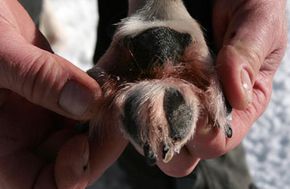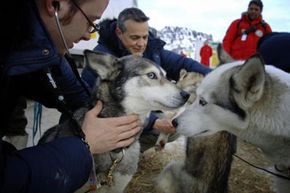With dogs hitched by rope lines to a sled, competitors in the Iditarod Trail Sled Dog Race set out across Alaska for a roughly 1,100-mile journey over snow and ice in frigid temperatures every March. The test of dog and human is a commemoration of a 1925 piece of Alaskan history, in which diphtheria serum was transported via sled dogs from Nenana to Nome to stop an outbreak.
Traditionally, sled dogs filled utilitarian needs, but sled dog racing began in Alaska in 1908 with the All-Alaska Sweepstakes. Other sled dog contests were held throughout the 20th century. In 1973, the Iditarod Trail Sled Dog Race first set off, and its popularity grew over the years.
Advertisement
By the late 1980s, the Iditarod had become famous with the help of publications and movies on sled dogs. More people saw the business opportunities associated with the race, and the race seemed to shift from a wilderness adventure to a competitive sport. The Alaskan tradition of mushing and the camaraderie among mushers on the Iditarod trail were important elements of the race in the early days. But over the years, more people sought to win the race, and the prize winnings increased. In 1995 someone from outside Alaska won the race for the first time, demonstrating that the race's popularity had reached beyond the 49th state.
Race times have dropped as mushers go all-out to win the competition. In 1973, the winner finished in 20 days, 49 minutes and 41 seconds; the current race record is Martin Buser's 2002 victory, won in just 8 days, 22 hours, 46 minutes and 2 seconds. The 1973 first-place winner took home $12,000 and second place got $8,000 (the third- through 20th-place finishers won descending amounts); the 2007 winner received $69,000, and second place earned $64,300 (and the third- through 58th-place finishers got descending amounts).
The harshness of the race -- not only the brutal weather conditions but the extreme distance and the fast pace with very little rest -- have made some question the competition's impact on the sled dogs. With more money at stake and mushers taking the race more seriously, does that mean that sled dogs are taking on bigger risks, and perhaps being abused, in a no-holds-barred contest? Some animal rights groups protest that the Iditarod takes things too far, that in addition to incidents of animal abuse by mushers, the dogs are pushed beyond their limits. And, activists, argue, there's no telling what happens to the dogs before and after the race.
So what effect does the intensity of the Iditarod race and its impact on the sled dogs? Read on to find out a little about the life of a sled dog.
Advertisement



